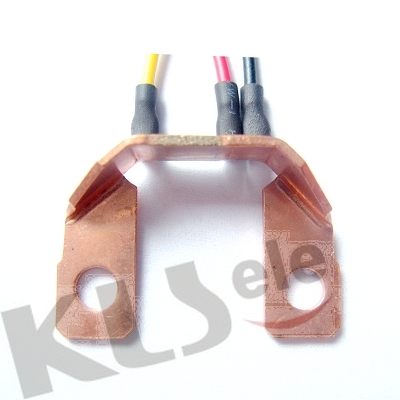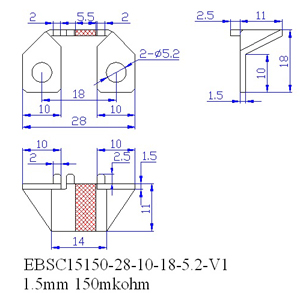Shunt Resistor for KWH Meter
1. General Description
- Shunt is one of the main current sensor used in kWh meter, especially in single phase kWh meter.
- There are 2 types of shunt-Braze weld shunt and electron beam shunt.
- Electron beam weld shunt is a new technology product.
- E-B weld has strict requirement to manganin and copper materials, the shunt by E-B weld is in high quality.
- E-B shunt is more and more popular and extensively used to replace the old braze weld shunt worldwide.
2. Features
- High accuracy: Error is at 1-5%. It’s easy to work out class 1.0 meter by using E-B shunt
- High linerarity: The linerarity is high so the resistance value change is at a narrow band. Production cost could be reduced because the meter calibration is very easy and quick.
- High reliability: The manganin and copper was melted to be in one body by high temperature electron beam, so the copper and manganin will never depart during the operation of the meter.
- Small self-heat: No solder between copper and manganin, so there isn’t additional heat on the shunt. The copper used in E-B shunt is pure, It has good ability of standing current; very even thickness make the contact resistance is the smallest; Enough section area and surface area will give out the slef heat quickly.
- Low temperature coinfidence: temperature coinfidence is smaller than 30ppm from -40℃–+140℃, there is very minor resistance value change at different temperature conditions.
- Resistant to oxidation: special material is coated on the copper to pretect from the oxidation
- Long term stability: the good performance is stable within 20 years
- Resistant to lightning strike: It can pass test of 3000A 10ms lightning strike test.
- Small size and low weight make the shunt assembly more easy, transport cost lower.
- E-B shunt cost is related with its structure. Reasonable design is important for low cost.





